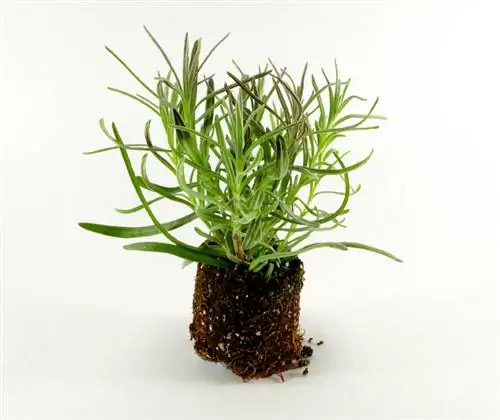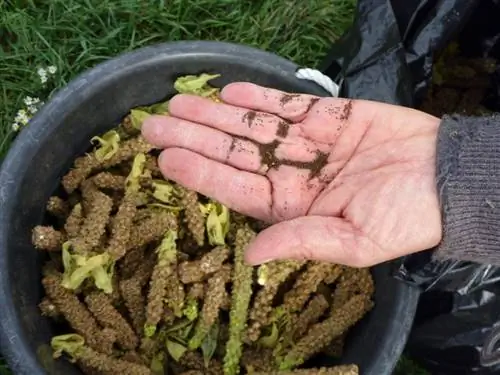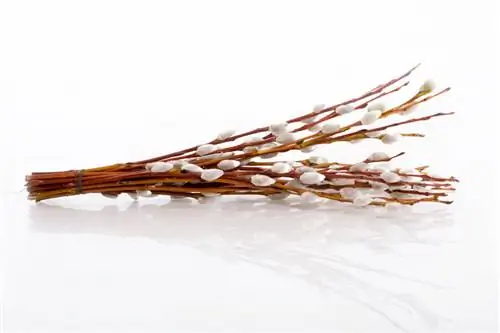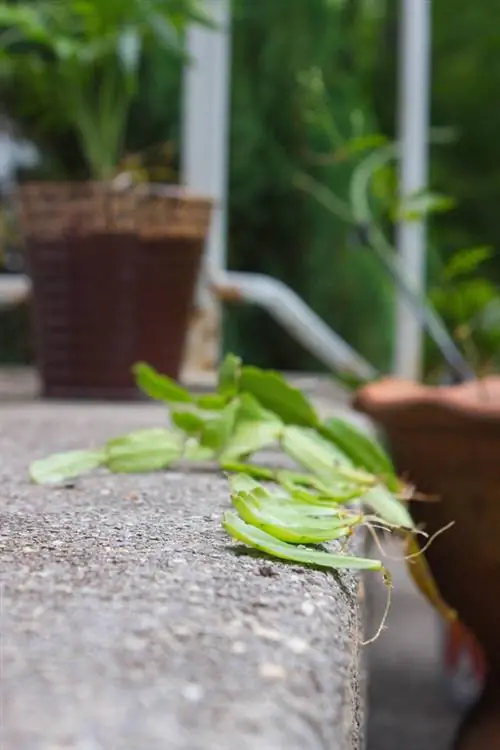- Author admin [email protected].
- Public 2023-12-16 16:46.
- Last modified 2025-01-23 11:21.
The black locust is a neophyte. This is the name given to exotic plants that come from other climate zones. Typical of these species is their pronounced reproduction. Actually, you don't have to help with the reproduction of the deciduous tree. The black locust reproduces naturally through its seeds, which can germinate for a surprisingly long time. But the whims of nature do not always correspond to your expectations. To prevent random spread and to specifically propagate the black locust in a specific location, you should heed the following tips.
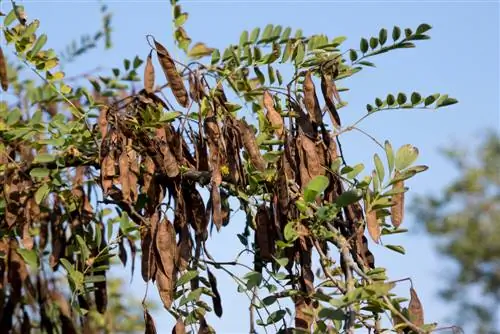
How can you propagate a locust tree?
Robinias can be propagated by seeds or cuttings. When propagating seeds, ripe seed pods are collected in October, the seeds are then removed, sown in spring and placed outdoors after the last frost. Cuttings are propagated using root cuttings, which are also planted after the last frost.
Ways to propagate a locust tree
- Propagation by seeds
- Propagation by runners and cuttings
Propagation by seeds
Propagation by seeds is wonderful if you want to save money. The fruits are quickly collected due to their unmistakable appearance. Separating out the seeds also requires little effort. This is how you propagate a locust tree from collecting the seeds to sowing:
- The seeds ripen in the elongated pods in October. Pick some pods from your tree
- break out the seed pods and remove some seeds
- store the seeds in a cool, dry place
- you can start sowing in spring
- score the seed shells with sandpaper (€14.00 on Amazon) or a file
- then pour hot water over them
- then place the seeds in lukewarm water and let them soak there for about a day
- now fill a clay pot with soil and press the seeds in about 5 mm deep
- place the pot in a sunny location
- after a week the first germs appear
- if frost is no longer expected, you can plant your seedlings outdoors
Propagation by cuttings
A second variant is propagation through cuttings. This process is also relatively inexpensive, as the robinia forms many runners.
- take root cuttings in spring or autumn (about 5-10 cm long)
- the root should have a diameter of at least 0.5 cm
- place the cuttings in growing soil
- water the cuttings well
- place these in a warm place
- Once the cuttings grow, increase the watering
- The same applies here: only put it outside after the last frost


